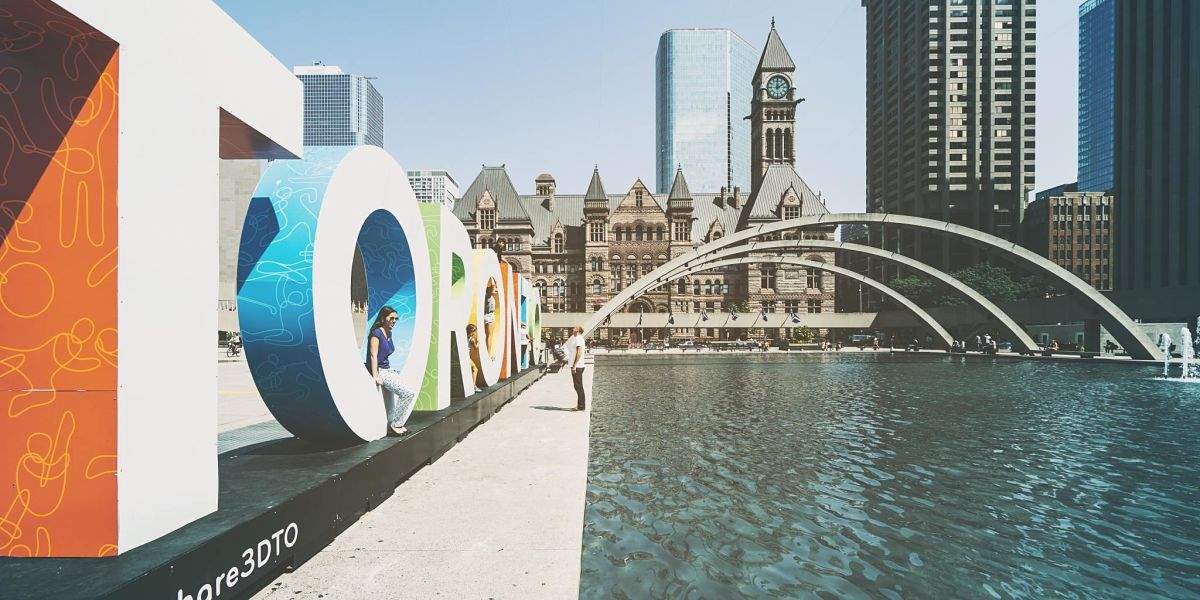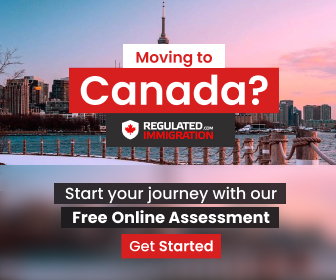Are you looking to enter Canada with a temporary visa? Based on your location and the purpose of your visit, you may need an Electronic Travel Authorization (eTA), Visitor Visa or Temporary Resident Visa (also known as TRV).
We are going to dive deep into Temporary Resident Visa or TRV to give you the latest information and updates.
Around 35 million people come to Canada as temporary residents each year. This section of the series is dedicated to giving you all the information you need about Temporary Resident Visa or TRV. With full knowledge, you will be able to navigate the Canadian visa nuances easily.
What is TRV Canada?
TRV Canada or TR Visa stands for Temporary Resident Visa (also referred to as Temp Visa). And you might need it if you plan to work, study or stay in Canada for extended periods, usually 6 months or more.
After the expiry of TRV, you can apply for an extension (while your visa is still valid). Otherwise, you have to go back to your country. TRVs can be issued from Immigration or Refugees and Citizenship Canada (IRCC).
People who come to Canada from visa-exempt countries need to have an electronic Travel Authorization (eTA) instead of TRV to visit Canada. For example, if you are from the UK, you will not need a TRV. You can do it with an eTA.

Who Needs to Apply for Temporary Canadian Visa?
A TRV Canada is required if you:
- Want to stay in Canada for a few months or a specific period
- Plan to visit your family and stay with them for some time
- Looking to study in Canada which requires you to stay for more than 6 months
- Want to live and work in Canada
Visitor Visa vs Temporary Resident Visa: What are the Differences?
A visitor visa is given to people who come to Canada for a short period. They are also known as tourist visas and authorize you to stay in Canada up to:
- 6 months (single entry visas)
- 10 years or one month prior to the expiry date on your passport (whichever is earlier)
Visitor visas are only for touring and leisure and are not meant for other purposes. That means you can’t work or study on a visitor visa. You will need a TRV for such purposes along with a study and work permit, especially if your stay extends beyond 6 months.
Types of Temporary Resident Visas
You may apply for two types of TRVs:
Single Entry Visa
You can enter Canada once with a single entry visa. You can get the visa at your Canadian point of entry by providing your passport. The officer from the Border Services Agency in Canada will check your eligibility and decide whether you qualify for the visa. Then he will put a stamp on your passport or issue another document (or both).
The single entry TRV is valid for 6 months if:
- Your passport doesn’t have a stamp
- You didn’t get any additional document mentioning validity
Your expiry date would be marked on the additional document if you got a work or study permit or a visitor record.
You will need to get a new visa if you leave Canada during your visa validity.
You may not need a new visa if you visit the United States or Saint-Pierre et Miquelon and come back to Canada, provided-
- You come back within the validity period of your visa
- You have a valid work or study permit
- You have a visitor record
Multiple Entry Visa
You can leave and enter Canada multiple times during your authorized stay with a multiple entry visa. The visa generally expires after 5 years or one month before the expiry date mentioned on your passport or re-entry visa (whichever comes earlier).
You can apply for a multiple entry visa if:
- You land in Canada on or prior to your visa expiry date
- The duration of stay falls within the visa expiry date
Canadian Study Visa
The Canadian authorities will issue a study permit along with your TRV if you wish to study at designated institutions in Canada. The study permit is given for the period of your course and an additional 90 days. You can prepare to extend your stay or leave Canada in those 90 days.
You might need to take the help of RCIC for getting your study permit.
Working Holiday Visa
Working Holiday Permits are given to nationals of some countries under the International Experience Canada (IEC) program. It is a temporary work permit that lets you stay and work in Canada and is valid for 12 to 24 months. You can apply for Working Holiday Permit if:
You haven’t got a job offer yet
- Want to be employed in more than one company
- Want to work in multiple locations
You might need to take the help of RCIC (Regulated Canadian Immigration Consultant) for getting your Working Holiday Visa.
Common Examples of Temporary Resident Visa
You may get a TRV for various purposes which will determine the type of permit you will need. Some common TRVs include:
Temporary Resident Visas: Given to people who want to visit their family in Canada. Also applicable for businessmen and other professionals.
Temporary Worker Visas: These visas are given to people who have got a job offer in Canada. You can work for up to 6 months with a temporary work visa.
Temporary Residence Permit: Given to foreign nationals who enter Canada for purposes not covered under TRV. Temporary Residence Permits are issued only for the period of stay, for example, three weeks.
Caregiver Visa: You can get a caregiver visa under the Canadian Caregiver program. The visa allows you to work as a personal caregiver for children, seniors, and people with disabilities.
How to Apply for a Temporary Resident Visa?
The standard process of TRV application is as follow:
- Collect and complete all required forms
- Fix an interview with Canadian Consulate if they need your biometrics/interview
- Wait till the consulate processes your TRV application (2 weeks to 2 months)
- Send your passport and required fees (200 $CAN) by mail after getting approval
- Wait for the passport to come back with your visa
Students can apply online at the Citizenship and Immigration Canada (CIC) website. If you want to get a work permit, visit the Immigration, Refugees, and Citizenship Canada (IRCC) website.
TRV Canada Requirements
TRV requirements are just like standard Canadian visa requirements that apply to all individuals coming to the country. You can apply for a visa in Canadian visa centres.
- A blank page on your passport for stamping (in addition to the last page)
- Supporting documents in English
- 2 pictures that satisfy Canadian Photo Requirements
- Visa Application Center (VAC) Consent Form complete with all information and your signature
- Signed Form IMM 5707 or Family Information Form if you are staying with your family
- Copies of documents to prove your current immigration status
- Financial documents like bank statements to prove your financial position
Are There Any Precautions to Take?
You may keep the following considerations in mind:
- Determine if you need a visa or are exempted from it
- File for the correct type of visa
- Give the Canadian Consulate interview honestly
- Fill the forms truthfully ensuring all information is accurate and complete
- Make sure you have the proper financial strength to support yourself in Canada (and prove to the officials)
- Provide enough proof that you will leave Canada after your visa expires
- Try to get an invitation letter from friends or family in Canada to support your TRV
We recommend you determine your requirements and then decide which visa you need. You can also take the help of an immigration consultant for getting your visa.
Commonly Asked Questions about Temporary Resident Visa (TRV) Canada
Here we have answered some of the questions you may have regarding travelling and working with Temporary Resident Visa (TRV). Feel free to reach out to us and ask any questions you have – our team would be happy to help!








